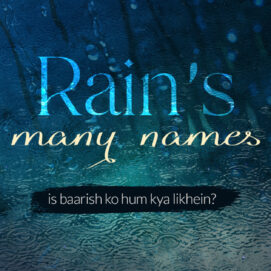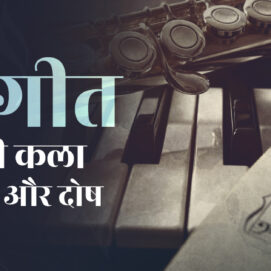زیادہ تلاش کیے گئے الفاظ
محفوظ شدہ الفاظ
کِھسیانی بِلّی کَھمبا نوچے
جسے غصہ آرہا ہو وہ دوسروں پر اپنی جھلاہٹ اتارتا ہے، بے بسی میں آدمی دوسروں پر غصہ اتارتا ہے، شرمندہ شخص دوسروں پر اپنی شرمندگی اتارتا ہے، کمزور کی جھنجھلاہٹ
چَمَنِسْتان
ایسا باغ جہاں پھول کثرت سے ہوں، ایسی جگہ جہاں دور تک پھول ہی پھول اور سبزہ سبزہ نظر آئے، گلزار، گلستان، باغ، پھولوں کا قطعہ، سبز کھیت
Black and White in Urdu Expressions

Imagine a world devoid of colours. Colours play a significant role in influencing human moods. However, various civilizations and regions have developed unique associations and prejudices tied to specific colors. These associations are deeply embedded in language, often reflected through words, idioms, metaphors, and expressions that capture these cultural nuances. Urdu, like many other languages, is rich in such expressions.
Take, for example, the colors black and white. In many languages, a semantic opposition exists between these two colors, with black often symbolizing evil, misfortune, or bad luck, and white symbolizing purity, goodness, and fortune. This contrast is deeply ingrained in cultural thought and language.
Let us explore some Urdu words and idioms that are a manifestation of this contradiction. In Urdu, safed (سفید) means white, and kaalaa (کالا) and siyaah (سیاہ) are used for black.
• siyaah-o-safed (سیاہ و سفید): Meaning black and white, it refers to good and bad deeds, or full authority or control. This couplet reflects the contrast very well.
sun ai hamāre siyāh o safed ke mālik,
ham aa.e haiñ vo safed o siyāh dekhne ko.
“listen!the owner of our black and white
we have come to see the black and white."
• safed-poshii (سفید پوشی): Meaning wearing white, historically, the color white was associated with the nobility and elite class, particularly those who did not engage in physical labour such as farming, factory work or crafts. White clothing was symbolic of social status and dignity. Today, we continue to see this concept reflected in the English idiom "white-collar job," denoting office work or professional roles that do not involve manual labor.
• KHuun safed honaa (خون سفید ہونا): This idiom refers to someone who has lost the natural essence of kinship, implying that they are indifferent to the welfare of their relatives and have forsaken familial responsibilities. The use of "white" here suggests something lacking in vitality or emotional connection, akin to colourless water.
safed-jhuuT سفید جھوٹ : means a white lie
The term "white lie" is another example of how color-based expressions vary across languages. In English, a white lie refers to a harmless or benevolent lie told with good intentions. However, in Urdu, the phrase has adopted a different connotation, often implying a complete falsehood or a blatant lie, regardless of the intention behind it.
On the other hand, black is generally associated with negativity—evil, sin, and misfortune. But black can also indicate intensity or something that induces fear.
• kaale-kos (کالے کوس): Meaning black miles, a "kaus" used to be a measure of distance (equivalent to about two English miles). kaale-kos refers to a long and difficult distance.
• kaalii-zabaan (کالی زبان): Refers to the supposed faculty of causing bad luck by saying negative things.
• siyaah-baKHt (سیاہ بخت): It means unlucky or unfortunate. baKHt means luck or fortune.
• ruu-siyaah رو سیاہ : ruu means face, this word ruu-siyaah means backend face and it refers to disgraced, dishonoured, ignominious, evil-doer, sinner. This word is used in various ways in Urdu and especially in Urdu poetry. There is a famous couplet by Ghalib.
mai se ġharaz nashāt hai kis rū-siyāh ko
ik gūna be-ḳhudī mujhe din raat chāhiye
“I seek no joy in drinking wine,
A slight state of oblivion is all I need, day and night"
In classical Urdu Ghazals, raqeeb (the rival in love) is often referred to as raqeeb-e-ruu-siyaah.
The cultural symbolism of black and white in Urdu expressions reveals the deep connection between language, culture, and the human experience. While white often represents purity, status, and goodness, black carries connotations of misfortune, dishonour, or negativity. These associations, though rooted in tradition, continue to shape modern perceptions and language, demonstrating how colour can transcend its visual significance to become a powerful tool for expressing emotions, morals, and societal values.
Delete 44 saved words?
کیا آپ واقعی ان اندراجات کو حذف کر رہے ہیں؟ انہیں واپس لانا ناممکن ہوگا۔





